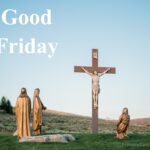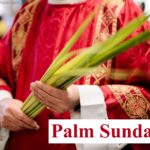
Catholics commemorate the complex and profound events of the evening of the Last Supper on the Thursday before Easter, which is known as Holy Thursday or Maundy Thursday.
Jesus was celebrating the Jewish Passover with his Apostles at what would be his final meal when He instituted the Sacrament of Eucharist by changing the bread and wine into his Body and Blood.
Maundy is derived from the Latin word for “command”, referring to the new Commandment that Jesus gave his disciples to love one another as He loved them when He established the priesthood and washed the feet of his closest followers.
There is no formal end to the Mass of the Lord’s Supper as the faithful has an opportunity to adore Jesus in the Blessed Sacrament into the evening, recalling how Jesus prayed in the Garden of Gethsemane where he would be arrested.
Traditionally, on the morning of Holy Thursday the bishop of each diocese celebrates a Chrism Mass where the holy oils that will be used during the year are blessed and priests of the diocese renew their vows.
Holy Thursday is the first of three sacred days that make up the sacred Paschal Triduum. Along with Good Friday and Holy Saturday, it brings Lent to a close.
Holy Thursday is the first day of the Easter Triduum:
God shows that He wants to be close to us:
Qui, pridie quam pro nostra omniumque salute pateretur, hoc est hodie, accepit panem: these words we shall pray today in the Canon of the Mass. “Hoc est hodie” – the Liturgy of Holy Thursday places the word “today” into the text of the prayer, thereby emphasizing the particular dignity of this day. It was “today” that He did this: he gave himself to us for ever in the Sacrament of his Body and Blood. This “today” is first and foremost the memorial of that first Paschal event. Yet it is something more. With the Canon, we enter into this “today”. Our today comes into contact with his today. He does this now. With the word “today”, the Church’s Liturgy wants us to give great inner attention to the mystery of this day, to the words in which it is expressed. We therefore seek to listen in a new way to the institution narrative, in the form in which the Church has formulated it, on the basis of Scripture and in contemplation of the Lord himself.
Pope Benedict XVI, Mass of the Lord’s Supper, 9 April 2009
Signifying the unity in the Church and the power of Jesus:
A Mass celebrated only one time each year in each diocese:
Praying with Jesus at night:
Jesus gave the supreme expression of his free offering of Himself at the meal shared with the twelve Apostles “on the night He was betrayed”. On the eve of his Passion, while still free, Jesus transformed this Last Supper with the Apostles into the memorial of his voluntary offering to the Father for the salvation of men: “This is my body which is given for you.” “This is my blood of the covenant, which is poured out for many for the forgiveness of sins.”
Catechism of the Catholic Church 610
Remember Jesus:
Jesus is the Lamb of God:
So when he had washed their feet and put his garments back on and reclined at table again, he said to them, “Do you realize what I have done for you? You call me ‘teacher’ and ‘master,’ and rightly so, for indeed I am. If I, therefore, the master and teacher, have washed your feet, you ought to wash one another’s feet. I have given you a model to follow, so that as I have done for you, you should also do.”
John 13: 12-15
A symbolic action and an absurd gesture:
Following Jesus and seeing Him in one another:
Jesus’ ultimate surrender of his life:
The Truth, Goodness, and Beauty of the Catholic Church
Showing the love of Christ:
Share this page with friends and family to start a conversation about your faith.
Don’t miss a post. Learn more about the Catholic Church and strengthen your Catholic faith.
Find more Fiercely Catholic video issues here.
Subscribe here.


